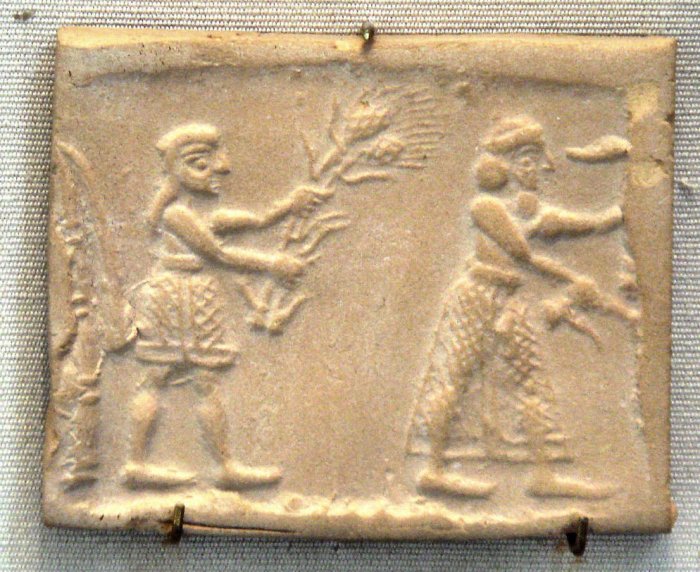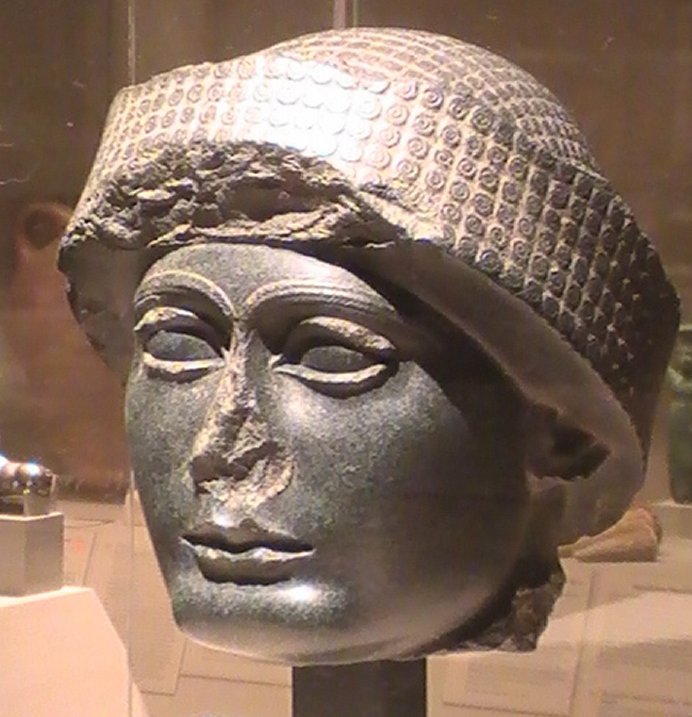Who Was The Sumerian Ensi?
A. Sutherland - AncientPages.com - Assyriologists have identified around twenty central provinces, and much we know today about Sumer originates from archives related to the sites of Girsu (Tello), Umma, Ur, Nippur, and Puzriš-Dagan (Drehem, a suburb of Nippur).
Sumerian cylinder seal impression dating to c. 3200 BC, showing an ensi and his acolyte feeding a sacred herd. Image credit: PHGCOM - CC BY-SA 4.0
Especially the collections from Umma and Girsu-Lagash are practically the only surviving provincial archives from the times of the Third Dynasty from Ur, which can serve as the basis for the study of local power structures, including the position of ensi.
A two-headed power controlled these provinces: one of them was a civil governor, ensi, who directed the administration and the sector of the temples and represented the highest judicial authority of the province.
The other was a post of the military governor (sagina) of Ur, a position which may have been a promising starting point for a career. The sagina reported directly to the authority of the king or the grand vizier. It was, therefore, independent of ensi.
However, the functioning of the empire's peripheries is less well known.
Ensi Managed The Community In Time Of Peace And War
The titles of king-priest en and king-commander of Lugal were adopted by the rulers of the main Sumerian cities, which ruled over larger, loosely integrated organizational territories.
In the Old Sumerian Period, divided into the Pre-dynastic Period (3000 BC to 2800 BC) and Early Dynastic Period (2800 BC to 2340 BC), the term ensi was one of the titles of independent Sumerian city-rulers. They held most political power in Sumerian city-states during the Uruk period (c.4100-2900 BC).
The ensi title meant "head of agricultural work" and originally referred to the coupling manager belonging to the commune. However, since the donkeys that were harnessed to the plow also pulled carts going to war, ensi could, therefore, also manage the community during the war or some important public tasks.
Head of Gudea in polished diorite, reign of Gudea (Boston Museum of Fine Arts). Image credit: Kkhemet - CC BY-SA 4.0
The title describing the city's independent ruler was widespread only in the 3rd millennium BC. At the end of this millennium, during the reign of the 3rd dynasty of Ur, ensi was exclusively the province administrator, who was on behalf of King Ur.
In the later Sumerian period, an ensí was subordinate to a lugal. Nevertheless, even the powerful rulers of the Second Dynasty of Lagash (c. 2100 BCE), such as Gudea were satisfied with the title 'ensí.'
Gudea - the King-Priest of the Sumerian city of Lagash, located in southeast Mesopotamia - was one of them. He possessed significant influence in Sumer during his 20-year-long reign. He chose the title of ensi (town-king or governor), instead of the title 'lugal.'
From the Old Akkadian period (the time of Sargon the Great), the term 'ensi' meant only a province governor subordinate to the king. In later eras, it retained the same meaning, including the Babylonian state.
In the city-state of Ashur, the hereditary ruler bore the Akkadian language version of the title ensí, while the patron deity was regarded as (šarrum - the Akkadian for "king."
Ensi – A Dignity Of Sumerian Temple
The highest dignity of the Sumerian temple city was the 'Ensi.' Originally, ensi probably meant a high priest whose powers included supervision over the construction of the temple.
He was also a worldly ruler, chief priest, chief military officer, and prominent, the earthly representation of the city god. He had full legislative, military, administrative, and judicial power on his territory.
If the local prince was able to bring under domination other city-states as well, he became 'lugal' (or 'great man/ruler') because his supremacy began to encompass a more extensive territory; he was called 'lugal,' translated as "great man." He ruled on behalf of the local god and headed the priests forming the ruling elite. If a "center of power" comprised several cities, the leading city prince (or "ensi") was responsible for the title "Lugal."
Ensi was considered chosen by the gods and possessed absolute power; however, it was more of an "absolutist system" than a system based on religious values. When the city prince lost the favor of the various gods - symbolized by catastrophes including incursions by enemies, illnesses, and natural events), he was quickly replaced by another "chosen one," who was probably recruited from the "Assembly of Elders."
A woman could not obtain this title but still hold a high position within the temple. In this respect, the Sumerians were somewhat progressive people. Each Sumerian city had a temple dedicated to its guardian deity and would either be governed by an ensi or a lugal.
Written by – A. Sutherland - AncientPages.com Senior Staff Writer
Updated on March 4, 2023
Copyright © AncientPages.com All rights reserved. This material may not be published, broadcast, rewritten or redistributed in whole or part without the express written permission of AncientPages.com
Expand for referencesReferences:
Samuel Noah Kramer, History Begins at Sumer
Gary A.Thomson, First Writers - The Sumerians: They Wrote on Clay
More From Ancient Pages
-
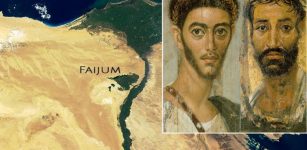 Faiyum Mummies: Long Lost Secrets Of A Mummy’s Portrait
News | Nov 24, 2020
Faiyum Mummies: Long Lost Secrets Of A Mummy’s Portrait
News | Nov 24, 2020 -
 Stunning Swiss Stonehenge Discovered Underwater
Archaeology | Nov 4, 2019
Stunning Swiss Stonehenge Discovered Underwater
Archaeology | Nov 4, 2019 -
 How King Arthur Became One Of The Most Pervasive Legends Of All Time
Featured Stories | Feb 12, 2017
How King Arthur Became One Of The Most Pervasive Legends Of All Time
Featured Stories | Feb 12, 2017 -
 Unexplained Old Cases Of People Who Saw The Past And The Future – Time Travel Mysteries
Featured Stories | Apr 22, 2025
Unexplained Old Cases Of People Who Saw The Past And The Future – Time Travel Mysteries
Featured Stories | Apr 22, 2025 -
 Ancient Human Traces Found In The Inhospitable Namib Desert
Human Beginnings | Oct 21, 2024
Ancient Human Traces Found In The Inhospitable Namib Desert
Human Beginnings | Oct 21, 2024 -
 Remains of Maurya-Era Wall Discovered In Tilaurakot, Kapilvastu, Nepal
Archaeology | Jun 16, 2022
Remains of Maurya-Era Wall Discovered In Tilaurakot, Kapilvastu, Nepal
Archaeology | Jun 16, 2022 -
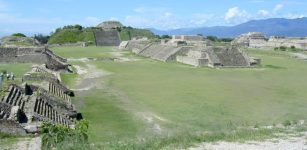 Ancient Mexican City Endured For Centuries Without Extremes In Wealth And Power
Archaeology | Mar 8, 2022
Ancient Mexican City Endured For Centuries Without Extremes In Wealth And Power
Archaeology | Mar 8, 2022 -
 Chickens Were Introduced To Britain, Mainland Europe, And Northern Africa Later Than Previously Thought
Archaeology | Jun 13, 2022
Chickens Were Introduced To Britain, Mainland Europe, And Northern Africa Later Than Previously Thought
Archaeology | Jun 13, 2022 -
 Lothal – ‘City of Dead’ – One Of The Most Prominent Ancient Places In Danger To Be Forgotten
Featured Stories | Jun 10, 2015
Lothal – ‘City of Dead’ – One Of The Most Prominent Ancient Places In Danger To Be Forgotten
Featured Stories | Jun 10, 2015 -
 La Garma Cave Offers Evidence Of Over 300,000 Years Of Human Activity
Featured Stories | Dec 5, 2023
La Garma Cave Offers Evidence Of Over 300,000 Years Of Human Activity
Featured Stories | Dec 5, 2023 -
 Chaco Canyon Mystery Solved By Scientists Hauling Logs On Their Heads
Archaeology | Feb 23, 2023
Chaco Canyon Mystery Solved By Scientists Hauling Logs On Their Heads
Archaeology | Feb 23, 2023 -
 Unsolved Ancient Mystery: Why Were These Foreign Shoes Hidden In A Temple?
Archaeology | Mar 29, 2014
Unsolved Ancient Mystery: Why Were These Foreign Shoes Hidden In A Temple?
Archaeology | Mar 29, 2014 -
 ‘Masters Of The Desert’ – Hohokam People, Massive Caliche Structures And Sophisticated Extensive Irrigation Canals
Civilizations | May 31, 2016
‘Masters Of The Desert’ – Hohokam People, Massive Caliche Structures And Sophisticated Extensive Irrigation Canals
Civilizations | May 31, 2016 -
 Feud Between The Medici And The Borgia Families – What Caused The Renaissance Clash?
Featured Stories | Mar 5, 2019
Feud Between The Medici And The Borgia Families – What Caused The Renaissance Clash?
Featured Stories | Mar 5, 2019 -
 Mysterious Ancient Underground Chambers Beneath Jerusalem Baffle Archaeologists
Archaeology | Jul 6, 2020
Mysterious Ancient Underground Chambers Beneath Jerusalem Baffle Archaeologists
Archaeology | Jul 6, 2020 -
 Secret Archaeological Excavations Have Led To The Discovery Of An Extremely Rare Ancient Roman Gold Treasure In Parc Hosingen, Luxembourg
Archaeology | Jan 20, 2025
Secret Archaeological Excavations Have Led To The Discovery Of An Extremely Rare Ancient Roman Gold Treasure In Parc Hosingen, Luxembourg
Archaeology | Jan 20, 2025 -
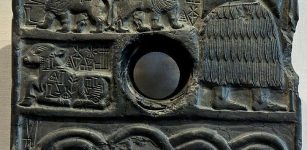 Babylonian Story Of Bird-God Anzu ‘The Wise One’ And His Underworld Realm
Featured Stories | Dec 10, 2016
Babylonian Story Of Bird-God Anzu ‘The Wise One’ And His Underworld Realm
Featured Stories | Dec 10, 2016 -
 Strange Encounter With A Dead Medieval Army In Normandy – Or Were They Visitors From A Parallel World?
Featured Stories | Nov 5, 2017
Strange Encounter With A Dead Medieval Army In Normandy – Or Were They Visitors From A Parallel World?
Featured Stories | Nov 5, 2017 -
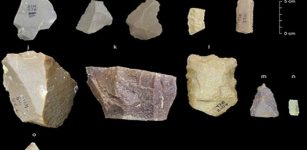 Ancient Stone Tools Found In India Suggest Humans Ancestors May Have Left Africa Much Earlier Than Previously Thought
Archaeology | Feb 5, 2018
Ancient Stone Tools Found In India Suggest Humans Ancestors May Have Left Africa Much Earlier Than Previously Thought
Archaeology | Feb 5, 2018 -
 Why We Celebrate Saint Lucy’s Day – The Bringer Of Light And Patron Of The Blind
Christmas Traditions | Dec 13, 2024
Why We Celebrate Saint Lucy’s Day – The Bringer Of Light And Patron Of The Blind
Christmas Traditions | Dec 13, 2024

